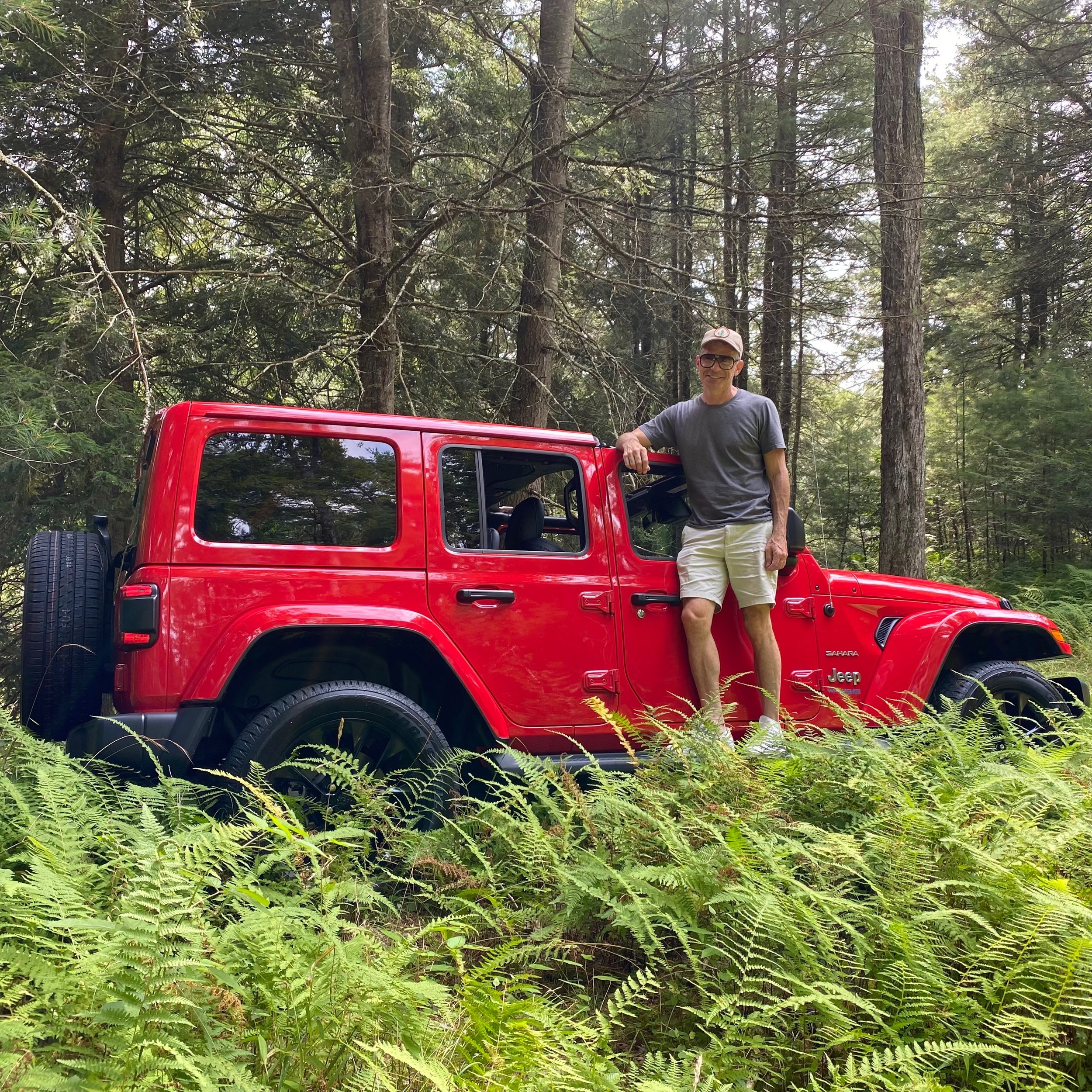Riding Harleys Into the Ever Expanding E-Bike Universe
Outdoorsy Dabbling In A Jeep 4xE and Harley E-Bikes
Neither my friend Lance nor I had ever ridden on an E-bike before unloading the Harley Davidson Serial One Mosh/City and Rush/City bikes at my place upstate. In my mind, E-bikes were like the mopeds I’d driven around the streets of my suburban Detroit neighborhood, when I was twelve, and a mysterious kid named Mike moved in around the corner with his divorced dad for the summer, proffering access to a pair of Puchs. Once we’d pedal-started the little two-stroke engine, and got it spewing blue smoke, we could choose to either continue pumping our legs, or just twist the throttle and let it take us along for the ride to the local party store.
The Serial Ones were, like many things in our ever-expanding E-universe, a bit more uncanny. The battery-powered assist on the bikes is adjustable—via a LED toggle on the $3800 Mosh, and a small touch screen on the $5000 Rush. But in order for it to function, we needed to be pedaling. Otherwise, just like on a regular human-powered bicycle, we come to a stop whenever physics deemed our propulsionary progress insignificant to overcome its laws.
In other words, like with a twelve-step program, it works if you work it. And work it we did. My house is at the base of what is known locally as Mile Hill, so whatever direction one travels in from there, some significant portion of the ride is going to be inclined. A wondrously moderate, and then fantastically steep, loop along a river and through dairy farms—one that typically takes an hour—can be done on the Serial Ones in half the time. A trek to the best swimming hole on our stretch of the Delaware River can be accomplished without dreading the final uphill, which arrives in the last five minutes, extending the bliss. And with their bright LED headlamps and taillights, riding at night on the rural lanes becomes a source of joy, instead of panic. We just had to watch out for deer. A little mechanical bell on the handlebars seemed to help scare off the cervidae.
So as not to further increase the risk of bodily harm intrinsic to bicycle riding, the e-boost only works at velocities below 20 mph. The Rush has a speedometer on its handlebar-mounted touchscreen. At one point during an extensive downhill, I hit 41.9 mph. Don’t worry, there are disc brakes. And we were wearing helmets.
Tasked with transporting the 50-60 pound bikes from NYC to Upstate was another electric-powered offering from a traditional American vehicle manufacturer, the Firecracker Red, $55,000 Jeep Wrangler 4xe. This Jeep four-door looks just like its millions of gasoline-powered brethren have since the 1940s, with round headlamps, a seven-slotted grille, flared fenders, knobby tires, and a rectilinear body that seems to have been styled with a T-square. But hidden under its back seats is a 17.3 kWh battery, good for around 20 miles of electric-only range.
This range includes any kind of driving you would ordinarily do in a Jeep, including off-roading. Lance and I took the Wrangler down a narrow trail at the dead end of my road, and then up onto the maintenance path for a nearby gas pipeline. This cut is visible on Google Earth as a pin-straight line, but that ignores the tremendous elevation changes it takes as it rolls up and down local hills. As it turns out, battery propulsion is ideal for an undulating backcountry trek like this, ridding the ride of putrid and hot emissions, and disruptive rumbly motors, while allowing the fresh air, creepy nature noises, and verdant scents to waft in. The recent rain even allowed us to make splashy mud puddle videos.
Instead of choosing to create new forms for their premiere electric offerings, both of these brands elected a more stealthy strategy, hiding their battery power in familiar forms, sneaking it into consumers’ lives furtively. This kind of Trojan Horsing acts under the cover of what I like to call Butch Drag, allowing fans permission to dip their toes into the electron pool without appearing—to themselves or others—to care overtly about these products environmentalist mission.
I’m a fan of taking design advantage of the liberation from convention offered by battery power, but not everyone is ready for a Jeep or a bike that looks like it was drawn by Syd Mead. These models provide plenty of adventure, and an accessible point of entry into the electric lifestyle. Once they sample the advantages of battery power, few consumers ever turn back.
Photography by Lance Nelson.



